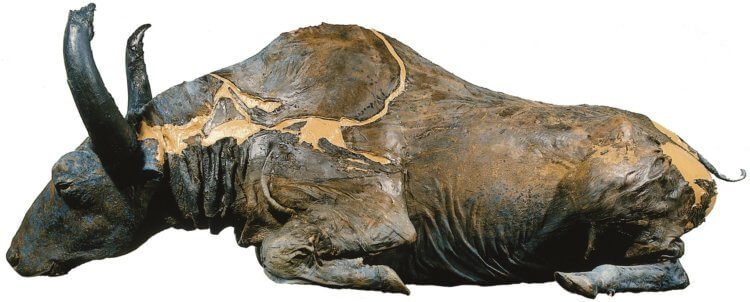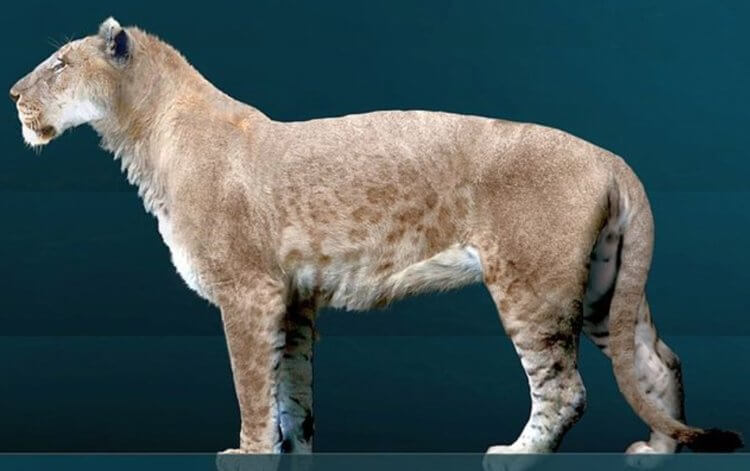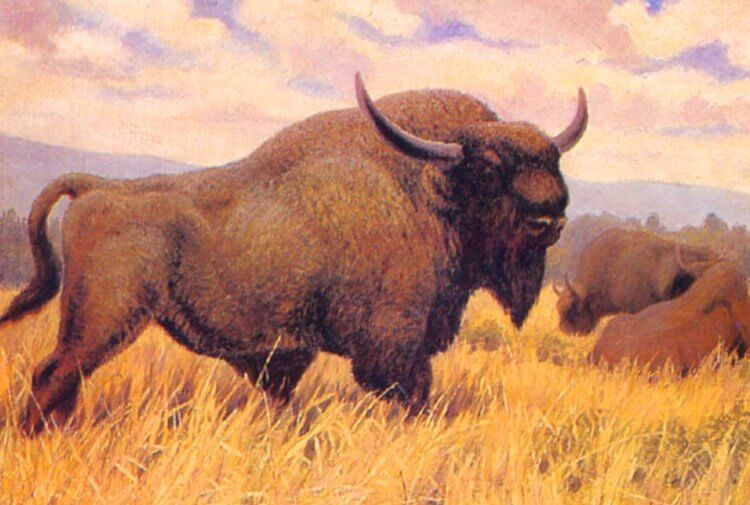In 1979, four gold miners from Alaskamade an important scientific discovery - they discovered the well-preserved body of an ancient bison. They immediately called paleontologists and they began to study the find. It turned out that the animal died as a result of a lion attack, and then ended up in permafrost. At first, scientists believed that the age of the bison was 36,000 years, but the study of the body with the help of modern instruments showed that it is much older - it is about 50,000 years old. It would seem that after studying the body of an ancient animal, you just need to send it to some museum. But paleontologists conferred and decided to taste the meat of an ancient creature and cooked stew from it. What did it taste like?

An ancient bison named "Blue Baby"
Ancient bison in permafrost
The well-preserved bison remains were coveredvivianite is the name of a mineral that was formed as a result of the interaction of phosphorus from the body of an animal with iron from the soil. When the mummified body peeked out a little from the soil, the mineral reacted with the air and the remains turned blue. Because of this, the bison got the nickname "Blue Baby" (Blue Baby).

The body of the "Blue Baby" is perfectly preserved
It was difficult to get the body of the animal, becausethe ground was frozen, and some parts of the torso were stuck between blocks of ice. Due to the risk of decomposition, paleontologists decided to cut the body apart and send it to the nearest university for freezing.
During the study of the body, scientists came to the conclusion thatthey belong to the steppe bison (Bison priscus). He lived in Alaska during the Ice Age and fell prey to the ancient American lion (Panthera leo atrox). This, at least, was evidenced by the marks of teeth on the neck of the animal and a fragment of the fur of a dangerous predator - the evidence turned out to be more than convincing. After the attack, severe cold clearly set in, the lion could not finish eating the bison and his body ended up in permafrost.

ancient american lion
See also: Scientists have found the very first predator on Earth 560 million years old
Ancient bison dish
It would be logical if, after studying the body, scientistssent the bison's body to the museum. So they did, but before that they cut off a few pieces of meat from his neck to cook a stew from it and taste the ancient beast. They did not dare to simply fry the meat, so they added a large amount of garlic, onions, carrots and potatoes to the dish. It has been noted that in 50,000 years, bison meat has not gone bad because at least the neck froze immediately after the animal died.
When he thawed, he uttered unmistakablyrecognizable aroma of beef, rather unpleasantly mixed with the faint smell of the earth in which it was found, with a hint of mushrooms, - noted paleontologist Dale Guthrie (Dale Guthrie).

Taxidermist Eirik Krankvist and ancient bison
Dinner Party Serving Mummy Stewancient bison, took place in 1984. About ten scientists gathered at the table - there were many guests, because no one wanted to miss such an interesting event. According to them, the meat turned out to be quite fragrant and tasty, but it was tough. Most likely, the smells of earth and mushrooms mentioned above were interrupted by the aromas of vegetables, of which there were a lot.
Dinner was the Blue Baby. The meat was well aged, but still a little tough, and this gave the stew a strong “Pleistocene” flavor, the scientists shared.
What were the ancient bison
Finally, it is worth saying a few words about the steppebison, which are also known as bison - what were these creatures? Scientists believe that they mainly lived in the steppes of Europe, Central Asia, North America and some other regions of the ancient world. Outwardly, they very much resembled modern bison, but were much larger - they towered by as much as 2 meters. Ancient people often depicted these animals on the walls of caves. From this we can conclude that they were actively hunted.

Ancient bison illustration
In order not to miss the news of science and technology, subscribe to our Zen channel. Do it right now.
In general, this is not the first time people have eaten mummies.Earlier we said that during the Middle Ages, Europeans ate the mummies of the ancient Egyptians, because they were considered good for health. According to historical data, for more than 500 years, Egyptian mummies "treated" people from headaches and even plague. Today it sounds like wildness, but it used to be considered the perfect norm - if you want more details, read this material.








